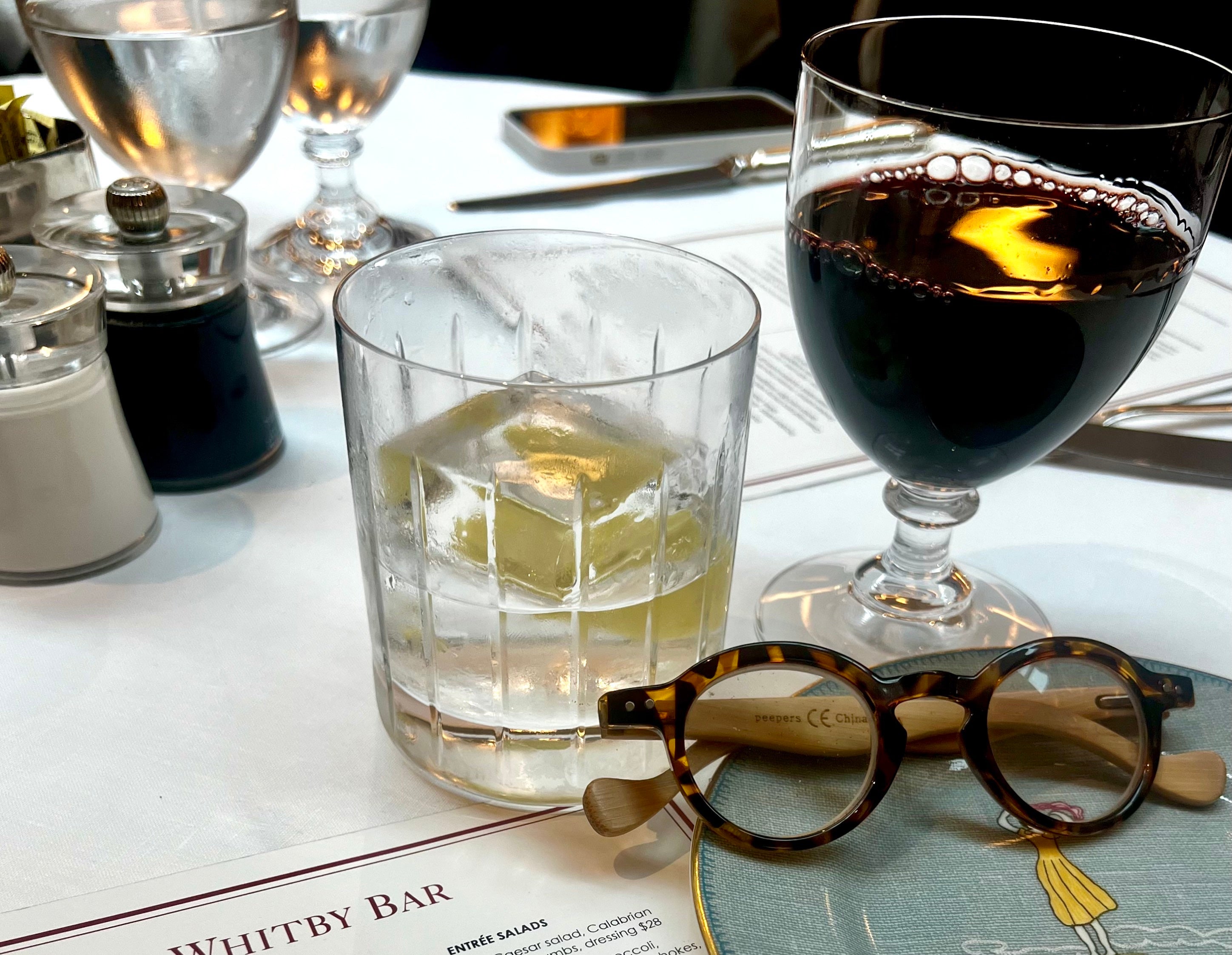Food & Recipes
Build a Simple Charcuterie Board with Our Easy Guidelines!
Charcuterie is a popular culinary art dedicated to enjoying preserved meats and cheeses. These bountiful spreads have been used to entertain dating back to the time of the ancient Greeks and Romans. Today, charcuterie boards continue to be an eye-catching and delicious feature for hosting in your own home.
The key to choosing which items will pair best with different textures and flavors is by having diverse options. For example, you’ll want to include both mild and spicy options for a balanced flavor profile. Challenge your tastebuds by layering sharp and creamy cheeses, salty and savory cured meats, and flavorful spreads and other accompaniments, like honeycomb or mustard.
With the help and expertise of Fran Berger, experienced home entertainer and designer, you can craft and arrange some of the most unique charcuterie boards to delight your guests. Use this guideline for choosing the best ingredients and items for your next celebration!
1. Choose Your Meats
Sausage
Salami / Soppressata - Salami is a salty and savory meat that pairs well with many kinds of cheese. Use different flavors, like peppered, finocchiona (fennel) and cacciatore. Salami comes in several sizes, some narrower, some wider, so choose ones that are proportionate to your board.
Award-winning and handmade Olympia Provisions Salamis are crafted using authentic old-world techniques and make a great gift and the perfect centerpiece for any charcuterie board. These salamis come in a variety of samplers to share with others (and enjoy yourself)!
Chorizo - Chorizo is a blend of different meats and spices that give it a robust, smokey flavor that can be a delicious accompaniment to your charcuterie board.
Ham
Prosciutto - An uncooked, unsmoked, and dry-cured ham, Prosciutto is typically served on a charcuterie board in delicate, thin slices. You can roll or shape them to create a beautiful arrangement. Pair with aged parmesan or fresh mozzarella to highlight the salty flavors.
Ibérico - A type of Spanish cured leg of pork, sliced Ibérico is an acceptable choice of meat for your spread. Layer with cheddar cheese on crispy bread slices.
Guanciale - Guanciale has a very savory, rich flavor, with a high fat-to-meat ratio. Thickly sliced, Guanciale is similar to bacon in taste. Since it is rare meat, it can be costly but is fun to indulge in for special occasions.
Pâté
Foie Gras - Foie gras is a well-known, French delicacy prepared from the liver of male ducks and geese. This luxury meat is high in fat, giving it a very soft, velvety texture that melts in your mouth. Depending on state laws, foie gras might not be available for purchase in your area.
Mushroom Pâté - A combination of mushrooms, onion, herbs, cheese, and olive oil, mushroom Pâté is a lovely vegetarian substitute for meat. This meatless spread is an elegant and tasty appetizer, served best with toasted sourdough bread.
Smoked or Dried Meats
Brisket / Burnt Ends - Cubed pieces of crunchy, burnt ends give a tender and tasty texture to your board. Style the seasonings to your board’s theme - BBQ sauce is tangy, while brown sugar gives it a sweet side.
Pork Belly - Smoked pork belly has a melt-in-your-mouth tenderness that goes well with most cheeses.
Bresaola / Speck - Bresaola is a lean and tender cut of beef. This cured meat has hints of spices like garlic, pepper, and juniper. Speck, derived from northeast Italy, is a lightly smoked, cured ham. It has a salty, unique flavor, much like Prosciutto, making it perfect for pairing with cheeses and bread.
2. Choose Your Cheeses
Soft Cheese
Soft cheeses are mild in flavor and have a tangy creaminess that no other food can replicate. Unripened soft cheeses are aged to allow the mold to intensify the salty and earthy flavors. Some have a harder rind or outer shell that is edible. Some of the soft cheeses you can include on your cheese board are:
- French Brie
- Brillat Savarin (Fran Favorite)
- Chevre (Goat Cheese)
- Ricotta
Semi-Soft Cheese
Semi-soft cheeses are more complex in flavor and have creamy, milky textures. Diversify your cheese board with one of these preferred semi-soft cheeses:
- Cheddar
- Petit Basque (Fran Favorite)
- Gouda
- Fontina
- Provolone
Hard Cheese
Hard cheeses often have a mild tang and sharpness in taste. Since they are ripened for longer periods, their water content is very low, giving them a crumbly, dry texture. Add any of these hard cheeses to your next cheese board:
- Parmesan
- Romano Pradera (Fran Favorite)
- Pecorino
- Swiss
- Ewephoria (Fran Favorite)
Blue Cheese
There’s no mistaking the taste of blue. Blue cheeses have a soft and crumbly texture with a pungent salty, piquant flavor. Bring a funky twist to your cheese board with one of these blue cheeses:
- Gorgonzola
- Roquefort
- German Chiriboga Blue (Fran Favorite and the only blue she will eat!)
3. Add Something Briney
Do a mix of olives – especially Castelvetrano – and pickles on your board for an extra salty kick. Maille Gherkins are a French-style pickle with a crisp crunch, making for the perfect garnish.
Don’t forget to have a good, grainy mustard for spreading and dipping. Award-winning Maille Whole Grain Mustard has a grainy texture and a powerful punch of intense flavors that will ignite your taste buds with every bite. As a key ingredient in the condiment cupboard, you can pair Maille mustard with cheese and crackers or use it for everyday dishes.
4. Include Fruits, Vegetables, and Something Sweet
Fresh & Dried Fruit
Fruit makes the perfect accompaniment for a cheese board. It offers more flavors, colors and textures to pair with different cheeses. Get creative with fresh fruits and vegetables like grapes, figs, cherry tomatoes, and radishes for added color and flavor.
You can also try dried fruits that make for easy eating and cleanup, such as dried dates, figs, cherries, apricots, and currants.
Jams/Preserves
Jams are commonly paired with cheeses as they offer a unique texture to each bite. Try pairing jams and preserves that both match and contrast the flavors of your cheeses of choice. Here are a few jams pairings to help you choose which to introduce to your cheese board:
- Blackberry Jam - Manchego, Cream Cheese
- Apricot Jam - Cheddar, Blue Cheese, Goat Cheese
- Dalmatia Fig Spread - Cheddar, Gouda, Brillat Savarin
- Orange Marmalade - Ricotta, Cream Cheese
- Quince Jam - Pecorino, Parmesan, Swiss
Honey
The sweetness of honey is perfect for drizzling over salty cheese and crackers. Some cheeses, like goat cheese, come in varieties with honey infused in them. Try adding in the complex flavors of truffle honey for a fun and fancy accompaniment.
5. Crackers, Bread, and Nuts for Texture
Crackers
Use crackers, crostini, or sliced baguettes to provide a crispy contrast to the soft textures of the other items on your board. Simple, multi-grain, or water crackers always make for an easy choice, as they have a mild taste, leaving all of the flavors of the cheese vulnerable and heightened. These can complement any type of cheese, especially semi-hard and hard cheeses.
Crostini, small rounds that are sliced and toasted from bread baguette, can give an added crunch and texture to your cheese and other toppings. These are perfect for soft cheeses, jams, and other garnishes.
Nuts
Nuts add a bit of crunch and earthy taste when paired with cheese. The natural sweetness of pecans and pistachios brilliantly complements the saltiness of cheeses. Texture can also make a difference - walnuts, for example, have a smooth texture that pairs perfectly with soft goat cheese. Marcona almonds, a variety of Spanish almond, is softer than the classic almond and has a buttery flavor that is fit for any cheese board. Candied nuts also add a fun, pop of sweetness.
6. Choose the right board
Before you can create your masterpiece arrangement, you need to choose the right board to serve it on. Depending on the area where your occasion will take place and the number of people you plan to entertain, consider some of these factors when choosing the perfect board for your spread.
Shape
The shape of the board you choose can depend on several factors, such as the variety of food options you plan to serve, the number of people you are hosting, and the overall aesthetics of your event.
Rectangular boards, while simple, can come in many different lengths and sizes. This particular shape allows for more cheese and accompaniments to be placed on the board. Circular-shaped boards allow for organized arrangement options and are easy for multiple hands to grab from different sides at once.
Natural wood takes on a unique shape and can often be custom-made to your needs for a one-of-a-kind look. Glass can also be warped into distinctive shapes like ovals and hearts.
Size
The size of your board will depend on the occasion and the number of people you plan to serve. Larger-sized boards allow more food items to be placed on the board, while smaller sizes are easier to store and transport.
The standard size of a cheese board is 9”x13”. If you plan to serve more than 5 people, boards longer than 20” would be the most efficient. You can, however, use more than one board in different rooms to spread guests around for more space.
Circular cheese boards typically come in sizes of 14”, 16”, and 20”. You can use multiple smaller-sized boards for additional accompaniments and cutlery.
Material
Wood
Wood is a popular choice for cheese boards as it is highly durable and aesthetically pleasing. Wood finishes are typically made for easy washing but look for one that is non-porous, such as maple, cherry, or teak, as some can soak in the aromas of cheese or leave stains from fruit.
Bamboo
Bamboo is also a popular option because it is both inexpensive and easy to clean. You can purchase a bamboo board for a lower price, while still obtaining the natural look of wood. Bamboo is also very sturdy and durable, as well as non-porous, which makes it more resistant to bacteria.
Bamboo cheese boards come in many sizes, but typically 13”x13” is the most common. Some even have built-in drawers with cheese knives, which is an extra incentive for the cost.
Marble
Marble is another option. Marble is a higher-quality material in terms of color and appearance. While it is very easy to clean, marble can chip or scratch if not handled with care. Red fruits like raspberries or strawberries may also stain white marble.
Marble boards tend to be fairly small (about 12 x 12 inches), so it best used for smaller gatherings and intimate settings.
Glass
Glass boards are beautiful aesthetically and can come in different, unique shapes. They're clear, so they allow light through them and create an interesting visual effect for your spread. The downside of glass boards is that they tend to be very fragile and difficult to repair if they break. In general, the thicker the glass, the stronger it is.
Color/Finish
Cheese boards that are stained darker colors create a contrast with lighter-colored cheeses. Lighter-colored wood boards may blend in better with your kitchen decor as well as highlight the bright, floral colors of jams and fruits. Marble can have hues of pink and glass can be stained in different colors. A glossy finish adds an extra layer of protection against spills and stains.
Mobility
If your cheese board will be moved around, some boards have handles for easier transportation from room to room. Boards or trays that have a lip help keep items from rolling or falling off of the sides. There are also rotating boards that turn so you don’t have to reach over everything to pick your items.
7. Arrange everything
The presentation should be attractive and inviting so that it looks appealing when served. While there is no set structure for arranging your charcuterie board, consider these steps to help arrange the items in a way that is both aesthetically pleasing and organized:
- Slice your cheese and meat in different widths to maximize textures. Cut into bite-sized pieces, so that it’s easier to pick and eat. Depending on the board you use, you can cut the items into different shapes and sizes for presentation purposes.
- Place the meats, cheeses and other large items on the board first. This leaves more room for filling in the smaller spaces with accompaniments. Try not to put the same objects next to one another (cheese next to cheese, meat next to meat, etc.) to offer more variety and color on the board.
- Fill up the additional spaces with accompaniments like nuts, jams, and fruits. Use decorative bowls to avoid objects from rolling around on the board.
- Place serving utensils, such as spoons, cheese knives and toothpicks on or beside the board.
- Garnish with fresh herbs, such as rosemary or thyme, or edible flowers to add vibrant colors against the cheese and crackers.
Pro tip: Label each item on your board (optional). This will help guests identify what they are eating and make it easier to find their favorite flavors!
Food That Fills The Home and The Heart
From a small, intimate dinner party to a professional networking event, there is something on the charcuterie board for everyone. How you choose to craft and arrange yours is what makes it truly unique. Upgrade your home entertainment skills when you order a copy of Fran Berger Living, a curated collection of Fran’s favorites, including Fran’s Signature Glassware, designed to bring striking beauty to everyday living.





















